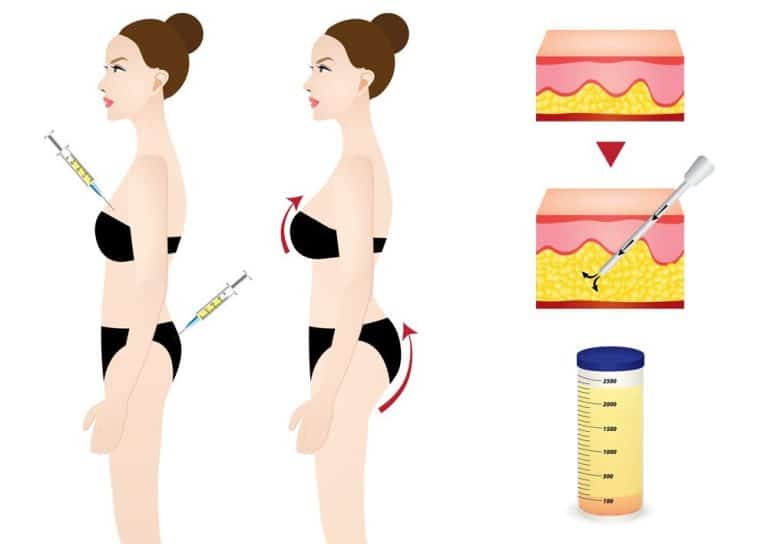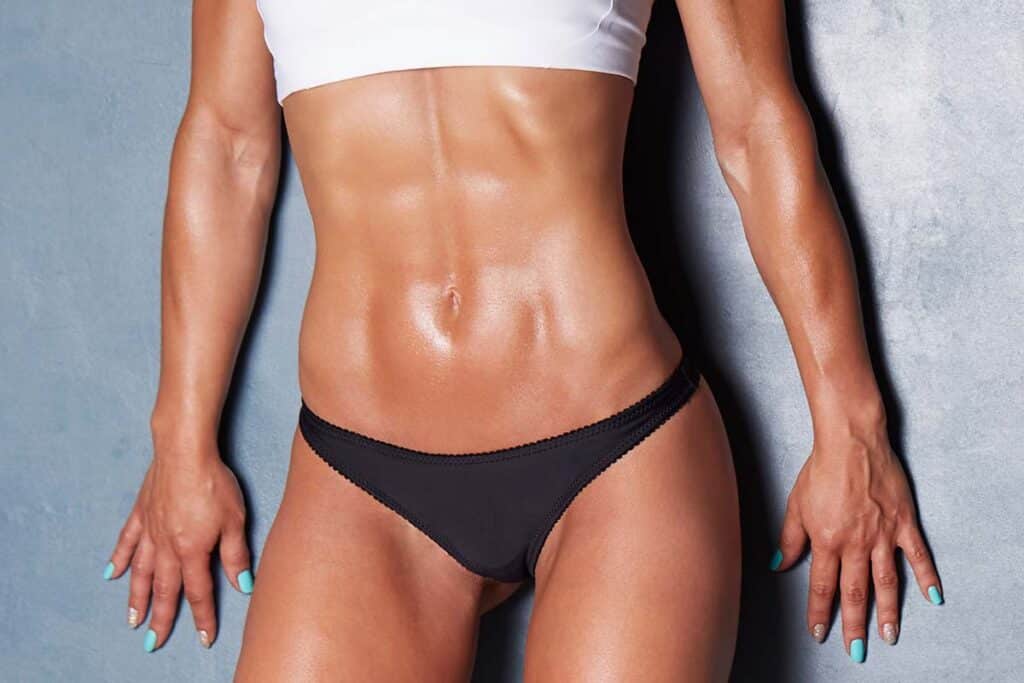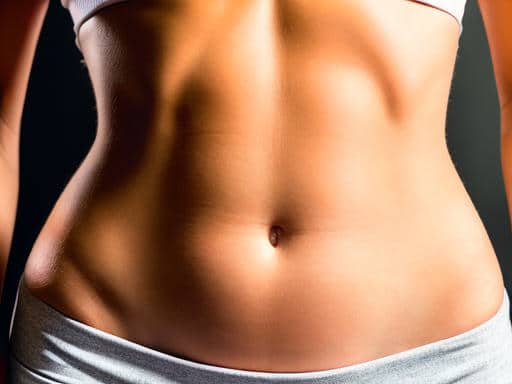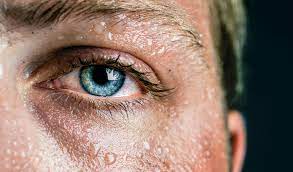Infragluteal fold smoothing techniques can transform your body confidence. These methods target the area beneath the glutes, enhancing your overall silhouette. Whether you seek to improve your appearance in swimwear with tumescent liposuction or simply want a smoother look through a gluteal thigh lift, these techniques offer effective solutions from a skilled surgeon.
From non-invasive treatments to surgical options, there’s something for everyone. Understanding these options helps you make informed decisions tailored to your needs. You’ll discover how each technique works, including the gluteal thigh lift and buttock, and what results you can expect. This guide will break down the essentials of infragluteal fold smoothing, ensuring you feel empowered on your journey to a more refined look.
Key Takeaways
- Understanding the infragluteal fold is essential for identifying concerns and choosing the right smoothing techniques to enhance its appearance.
- Common defects such as sagging or unevenness can be addressed with targeted techniques that you can incorporate into your beauty routine.
- Explore different smoothing methods like vertical, oblique, and horizontal techniques, and choose one that fits your comfort level and desired results.
- Incorporate a balanced diet rich in nutrients to support skin health and improve the overall appearance of the infragluteal fold.
- Regular exercise can significantly enhance smoothing results; consider specific workouts that target the glute area for optimal effects.
- Remember, consistency is key; applying these techniques regularly will yield the best results over time.
Understanding the Infragluteal Fold
Definition
The infragluteal fold (IGF) is a connective fibrous band. It acts as a hammock-like support system for the gluteal thigh lift buttock. This fold is crucial for maintaining the shape and structure of the gluteal area.
Anatomical Location
The IGF sits at the lower part of the buttocks, contributing to the gluteal thigh lift. It connects to the gluteal fascia and supports the gluteal muscles. The fold helps in defining the boundary between the gluteal region and the upper thigh. Understanding its position is essential for those exploring gluteal aesthetics.
Gluteal fat infiltration can impact how this area looks. Stubborn gluteal fold fat may accumulate here, affecting body contours. The deep gluteal tissues also play a role in how this fold appears.
Role in Support
The infragluteal fold provides vital support to the buttock. It helps maintain proper posture and balance while standing or walking. The deep gluteal fascia contributes to this supportive function. Removing fat from this area through liposuction can disrupt its natural support system.
Liposuction risks damaging the gluteal muscle fascia. This damage can lead to sagging or irregularities in the buttock’s appearance. Therefore, it’s crucial to approach body contouring with caution.
Importance of Preservation
Preserving the infragluteal fold is essential for aesthetic outcomes. Procedures like gluteal lifting should consider its role. Ignoring this aspect can lead to complications in the female gluteal region.
Fat grafts are another technique that can enhance this area without compromising support. These grafts help retain volume while keeping the natural structure intact. Proper techniques ensure that the IGF remains functional and visually appealing.
Common Defects and Concerns
Length Issues
Longer lengths in the infragluteal fold (IGF) can lead to various aesthetic problems. Excessive length may create an unbalanced appearance. This can affect how clothing fits and how individuals perceive their body shape.
Surgeons often address this defect during procedures. They aim to restore a more natural contour. A well-defined IGF enhances overall body aesthetics.
Angulation Problems
Inverted angulation is another common defect. This occurs when the angle of the fold is not ideal. Such issues can arise from previous surgeries or natural anatomy. An inverted fold can create an unflattering silhouette.
Plastic surgeons need to evaluate this carefully. Proper assessment helps determine the best approach for correction. Techniques vary based on individual needs and concerns.
Depth Deficiencies
Inadequate depth in the IGF can also be problematic. Shallow folds may lead to uneven contours. This can cause discomfort and dissatisfaction with one’s appearance.
Depth plays a crucial role in how the body looks from various angles. Insufficient depth might result from liposuction sequelae or other surgical complications. Correcting this issue often requires specialized techniques.
Secondary Problems
Previous surgeries can lead to secondary problems in the IGF area. Liposuction deformity is a significant concern. It may leave irregularities that affect the fold’s appearance.
Surgeons must disclose potential complications before any procedure. Understanding these risks helps patients make informed decisions. Awareness of possible outcomes is crucial for satisfaction.
Aesthetic Concerns
Aesthetic concerns related to IGF defects include sagging and uneven contours. Patients often express dissatisfaction when these issues arise. Sagging can occur due to aging or loss of skin elasticity.
Uneven contours disrupt the harmony of the body shape. Many individuals seek solutions to enhance their appearance. Addressing these concerns improves confidence and self-esteem.
Patients should discuss their specific concerns with plastic surgeons. Open communication leads to better outcomes and satisfaction with results.
Overview of Smoothing Techniques
Vertical Technique
The vertical technique focuses on smoothing the infragluteal fold. It targets the skin’s laxity and excess fat in a downward direction. This approach enhances the contour of the buttocks while lifting the area. Surgeons make incisions along the vertical axis, allowing for precise adjustments. This technique is ideal for those seeking a more pronounced lift and smoother appearance.
This method often leads to significant aesthetic improvements. Patients can expect a tighter look in the infragluteal region. Recovery from this procedure typically takes about two weeks. During this time, swelling and bruising may occur but will subside gradually.
Oblique Technique
The oblique technique offers a different angle of correction. It aims to smooth the infragluteal fold by approaching it diagonally. This method can address both lateral and medial areas effectively. Surgeons create incisions that follow an oblique line, which helps in reshaping the contours.
This approach is beneficial for patients with uneven skin texture or asymmetry in their folds. The oblique technique provides a natural transition between the buttocks and thigh regions. Recovery time varies but usually lasts around two weeks as well.
Horizontal Technique
The horizontal technique takes a distinct approach by targeting the fold horizontally. This method is effective for individuals with significant sagging or excess skin. Incisions made in this manner allow for extensive skin removal and tightening.
Patients who choose this technique often desire dramatic results. The horizontal technique can significantly improve the overall shape of the buttocks and surrounding areas. Typical recovery lasts about two weeks, with careful monitoring needed during this period.
Combination Approaches
Combining techniques can lead to comprehensive improvements in the infragluteal fold area. Surgeons may use vertical, oblique, or horizontal methods together based on individual needs. Tailoring these approaches allows for targeted corrections of various concerns.
For instance, one might combine vertical lifting with horizontal tightening for optimal results. Such combinations can enhance both shape and smoothness effectively. Each patient’s unique anatomy plays a crucial role in determining the best approach.
Surgeons assess factors such as skin elasticity and desired outcomes before deciding on techniques. Overall, understanding these options helps patients make informed decisions about their aesthetic goals.
Vertical Smoothing Method
Technique Overview
The Vertical Smoothing Method focuses on retrograde fat deposition. This technique involves creating vertical pillars of fat. These pillars provide support to the buttocks. They also help restore the volume of the gluteus maximus. The goal is to improve contour and position.
This method specifically targets sagging in the infragluteal fold (IGF). It addresses defects that can occur due to aging or weight loss. By using this approach, practitioners can enhance the vertical midline of the body. This creates a more youthful appearance.
Purpose and Benefits
The primary purpose of this technique is to support the buttock area. It aims to increase volume where it may have diminished. By enhancing the gluteus maximus, patients often notice a significant improvement in their overall shape.
Patients may experience increased confidence after treatment. Many report feeling more satisfied with their body image. This technique not only improves aesthetics but also boosts self-esteem.
Effectiveness of the Method
Research shows that the Vertical Smoothing Method effectively addresses specific IGF defects. Studies indicate that patients achieve noticeable results within weeks after treatment. Improvements in contour become evident as swelling subsides.
This method stands out when compared to other smoothing techniques. Its focus on vertical vectors allows for precise adjustments. Practitioners can target areas that need enhancement without affecting surrounding tissues.
Considerations for Patients
Patients should discuss their goals with a qualified practitioner before proceeding. It’s essential to understand how this method works and what to expect during recovery. Some may experience mild discomfort post-treatment, but it typically resolves quickly.
Potential side effects include swelling or bruising at the injection sites. These effects are usually temporary and subside within days. Proper aftercare can help minimize these issues and promote healing.
Oblique Smoothing Method
Fan-Shaped Movement
The Oblique Smoothing Method utilizes a fan-shaped movement. This technique targets fat deposition in the infragluteal fold area. It allows for precise manipulation of fat cells. The method spreads the fat evenly across the region. This helps in creating a smooth contour.
By using this technique, surgeons can achieve more natural-looking results. The fan-shaped approach distributes pressure effectively. It reduces the risk of uneven surfaces after surgery. Patients often notice a significant improvement in their appearance.
Pulling Mechanism
This method also pulls the buttocks obliquely. This action helps reduce sagging effectively. By pulling at an angle, the technique lifts the tissue. It creates a firmer and more youthful look. The angle used is crucial for achieving optimal results.
Surgeons consider various factors when applying this method. They assess the patient’s unique anatomy and needs. Each case requires a tailored approach for best outcomes.
Overall Enhancement
The Oblique Smoothing Method enhances the overall appearance of the infragluteal fold (IGF). With improved contours, patients feel more confident about their bodies. The technique not only addresses sagging but also improves symmetry.
Patients report satisfaction with their new look after surgery. The enhanced IGF contributes to a balanced silhouette. It complements other body features well, making it a popular choice.
Surgeons often combine this method with other techniques for better results. They may use it alongside the Vertical Smoothing Method discussed earlier. This combination maximizes aesthetic benefits.
The Oblique Smoothing Method has become essential in modern cosmetic surgery. Its effectiveness lies in its ability to create natural-looking results while enhancing body proportions.
Horizontal Smoothing Method
Direct Fat Grafting
The Horizontal Smoothing Method utilizes direct fat grafting to smooth the infragluteal crease. This technique involves taking fat from another area of the body and injecting it into the fold. The goal is to create a more even surface.
This method specifically targets the superficial aspects of the infragluteal fold (IGF). It helps reduce irregularities that may appear due to aging or weight changes. Fat grafting can improve the overall contour of the area. The results often look natural and blend well with surrounding tissues.
Treatment Focus
The focus on treating superficial aspects makes this method unique. Many patients prefer this approach because it minimizes scarring. It uses small incisions, which leads to quicker recovery times. Patients often notice an immediate improvement in the shape and smoothness of their IGF.
Combining this technique with others can enhance results. For example, pairing it with skin tightening treatments can improve overall appearance. A combination approach addresses both volume loss and skin laxity effectively.

Optimal Results
Achieving optimal results requires careful planning and technique. Surgeons assess each patient’s needs before deciding on the best approach. They consider factors like skin quality and body type. This assessment ensures that the treatment aligns with individual goals.
The use of this method is growing in popularity among cosmetic surgeons. Many professionals recognize its effectiveness in enhancing body contours. Studies show that patients who undergo this technique experience high satisfaction rates.
Fat grafting has benefits beyond aesthetics. It can also promote health by improving tissue quality in the treated area. Increased blood flow and nutrient supply contribute to healthier skin over time.
Combination Techniques
Using combination techniques can lead to better outcomes. Surgeons often recommend pairing horizontal smoothing with other methods, such as liposuction or laser treatments. These combinations help achieve a more comprehensive result.
Patients should discuss their options thoroughly with their surgeon. Understanding all available techniques ensures informed decisions regarding treatment plans.
Diet and Nutrition Tips
Balanced Diet
A balanced diet is essential for maintaining skin health. Focus on including proteins and healthy fats in your meals. Proteins help repair skin tissues, while healthy fats support skin elasticity. Foods like fish, nuts, and avocados are excellent choices.
Incorporating lean meats and legumes can also be beneficial. These foods provide the necessary nutrients to keep the skin firm. They contribute to a smoother appearance in areas like the infragluteal fold.
Hydration
Staying hydrated plays a crucial role in skin texture. Drinking enough water daily helps maintain skin firmness. Hydration flushes out toxins and keeps the skin plump.
Aim for at least eight glasses of water each day. You can also include hydrating foods such as cucumbers and watermelon. These foods not only hydrate but also provide essential vitamins.
Antioxidant-Rich Foods
Antioxidants are vital for promoting collagen production. They help protect the skin from damage caused by free radicals. Include fruits and vegetables high in antioxidants in your diet.
Berries, spinach, and sweet potatoes are great examples. These foods support overall skin health and enhance its appearance. Regular consumption can lead to noticeable improvements in the infragluteal zone.
Supportive Treatments
Combining diet with supportive treatments can yield better results. Consider looking into topical treatments that complement dietary changes. Creams containing retinoids or hyaluronic acid may aid in smoothing the crease.
e patients find success with aesthetic procedures like implants or fillers. These treatments can enhance the effects of a good diet. Always consult a professional before making decisions about treatment options.
Goal Setting
Setting realistic goals is important when focusing on diet and nutrition. Track your progress to stay motivated. Use a journal or an app to monitor what you eat and how it affects your skin.
Remember that changes take time. Consistency is key to achieving desired results in skin texture and firmness.
Effective Exercises for Smoothing
Gluteal Lifting Techniques
Several gluteal lifting techniques can help improve the appearance of the infragluteal fold. These exercises strengthen the gluteal muscles, providing a firmer and smoother look. Squats are one of the most effective exercises. They engage multiple muscle groups, including the glutes, hamstrings, and quads.
Lunges also play a vital role in enhancing glute strength. They target each side individually, promoting balance and symmetry in muscle development. Performing these exercises regularly can lead to noticeable improvements in muscle tone and shape.
Targeted Workouts
Bridges are another excellent workout for smoothing the infragluteal fold. This exercise focuses on the glutes while also engaging the core muscles. To perform a bridge, lie on your back with knees bent and feet flat on the floor. Lift your hips towards the ceiling while squeezing your glutes at the top. Hold for a few seconds before lowering back down.
Leg lifts are also beneficial for targeting the glutes directly. They can be done standing or lying on your side. When done correctly, leg lifts enhance support around the IGF area. Consistency is key here; aim for two to three sets of 10 to 15 repetitions.
Stretching Importance
Regular stretching is essential for maintaining flexibility in the gluteal region. Tight muscles can hinder performance and lead to discomfort. Incorporating stretches into your routine helps prevent muscle tightness and promotes better movement.
Hip flexor stretches can be particularly helpful as they open up the hip area and relieve tension in the surrounding muscles. Another effective stretch is the figure-four stretch, which targets the glutes directly. Sit on the ground with one leg crossed over the other knee, then gently press down on that knee for a deeper stretch.
Considerations for Liposuction
For those considering more aggressive options, such as liposuction, it’s crucial to consult with a professional. Extensive liposuction or overaggressive liposuction may lead to complications or uneven results if not performed by experienced surgeons in a private practice setting.
Combining these exercises with proper nutrition can yield better results than relying solely on surgical methods like liposuction. A balanced diet supports muscle growth and recovery while enhancing overall body composition.
Final Remarks
Smoothing your infragluteal fold can boost your confidence and enhance your overall appearance. You’ve learned about various techniques, from vertical to horizontal methods, along with diet and exercise tips tailored for effective results. Each approach offers unique benefits, allowing you to choose what suits your lifestyle best.
Now it’s time to take action! Start implementing these techniques today. Experiment with the exercises and nutrition tips shared in this blog. Monitor your progress and adjust as needed. Remember, consistency is key to achieving the smooth look you desire. Embrace the journey and enjoy the transformation. Your body will thank you!
Frequently Asked Questions
What is the infragluteal fold?
The infragluteal fold is the crease located under the buttocks. It plays a significant role in body aesthetics and can be a focal point for smoothing techniques.
Why do people seek infragluteal fold smoothing?
People seek smoothing to enhance their body shape, boost confidence, and address concerns like sagging skin or uneven contours in that area.
What are common defects associated with the infragluteal fold?
Common defects include sagging skin, cellulite, and irregular contours. These issues can detract from an overall smooth appearance.
What are the main smoothing techniques for the infragluteal fold?
The main techniques include vertical, oblique, and horizontal smoothing methods. Each targets specific concerns and offers different benefits.
How does diet impact the appearance of the infragluteal fold?
A balanced diet helps maintain healthy skin elasticity and reduces fat accumulation. Proper nutrition can significantly improve the overall look of the infragluteal fold.
What exercises are effective for smoothing the infragluteal fold?
Exercises like squats, lunges, and glute bridges strengthen surrounding muscles. This can help create a firmer appearance and improve contouring.
Are there any risks associated with smoothing techniques?
While generally safe, some methods may cause temporary discomfort or bruising. Always consult a professional before starting any treatment.











